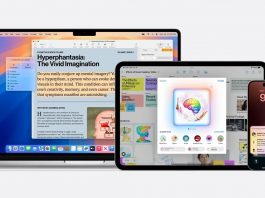To the surprise of almost no one, Apple is holding its first virtual event of the year on March 8th to show off its latest hardware. We heard rumors about this date for weeks, and the date isn’t the only thing that leaked – as is so often the case, we have a pretty good idea what Apple will be announcing. Of course, nothing is official until Apple shows it off on its livestream, but here’s what the rumors are pointing to this time.
iPhone SE with 5G
While this new iPhone won’t be nearly as exciting as the flagship models that Apple introduces in the fall, the iPhone SE remains an important product for the company. Starting at $400, the iPhone SE is a way to get Apple’s most powerful mobile processor in a “classic” (old) design. It sounds like that is the case with the 2022 iPhone SE: rumors indicate it will be physically identical to the current iPhone SE, which itself is identical to 2017’s iPhone 8.
But while the design may be dated, the internals should be fresh: The phone will likely include the same A15 Bionic chip found in the iPhone 13 lineup. Giving its $400 phone flagship performance is a trick Apple has been pulling since it released the original iPhone SE back in 2016, and we expect more of the same in 2022.
The other notable change is that this phone will probably include 5G connectivity, just like Apple’s more expensive phones. Carriers will certainly like the idea of a $400, 5G-capable iPhone as they try to get more and more subscribers using their more advanced networks. Both the A15 processor and 5G connectivity mean the new iPhone SE should be well supported for years to come.
As for everything else, the 2022 iPhone SE will likely retain its dated design, including a relatively low-resolution 4.7-inch LCD display with large bezels above and below it. It’ll also certainly keep the classic iPhone home button and Touch ID, something that might be a point in its favor for people who don’t like Face ID. The cameras could get a modest bump, but don’t expect anything more than a single shooter on the back.
iPad Air
The iPad Air is currently the oldest iPad in Apple’s lineup; it was completely redesigned when Apple released it in the fall of 2020. It’s still a pretty great tablet, sitting comfortably between the extremely basic entry-level iPad and the wildly expensive and powerful iPad Pro.
The rumor mill, lead by the reliable Mark German at Bloomberg indicates that the iPad Air will still get a few tweaks for 2022. In fact, they’re the same updates that we expect to see in the iPhone SE: an A15 Bionic chip and support for 5G networks. Neither of these things will fundamentally change the iPad Air; the current A14 processor (which was first released in Apple’s iPhone 12 lineup) is already plenty powerful. But given that the redesigned iPad mini from last fall has the A15 chip, it makes sense that Apple will want to make performance identical between the two devices.
5G is another feature that Apple added to the iPad mini last fall, so bringing it to the Air makes sense. To that end, it’s also possible that the iPad Air will get a new front-facing camera. Both the iPad mini and basic iPad that were refreshed last fall have an ultra-wide, 12-megapixel front camera with a “Center Stage” feature. That means the camera uses that ultra-wide field of view to continuously crop and adjust the focus of the video feed so your face stays, well, in the center of the screen.
Everything else about the iPad Air is expected to stay the same, including its 10.9-inch LCD display, single back camera and Touch ID on the power button. It’s a fairly modest set of updates, but that’s OK. The iPad Air offers the most important parts of the iPad Pro experience at a much more affordable price, and we expect that’ll continue with this update.
An updated 13-inch MacBook Pro with an M2 processor
Apple’s 13-inch MacBook Pro is looking long in the tooth. There’s nothing wrong with the M1 processor inside it, but compared to the 14- and 16-inch MacBook Pro models Apple released last fall, the chip is quite pedestrian. As such, we’re expecting a new M2 Apple silicon chip to power the refreshed laptop. It won’t be as powerful as the M1 Pro or M1 Max, but it should be a nice upgrade for a device that’s almost a year and a half old now.
Unfortunately, other changes are expected to be minimal. Apple might finally get rid of the Touch Bar for good, replacing it with a standard row of function keys like those found on the 14- and 16-inch MacBook Pro models. Other than that, it’ll probably keep the same display, form factor and paltry port selection. We’re really hoping it gets a better front-facing camera, but it’s not clear if that will happen.
It’s certainly not shaping up to be the most exciting Mac upgrade, but given how expensive Apple’s larger MacBook Pro laptops are, the 13-inch MacBook Pro should provide a bit of an upgrade over the MacBook Air without at a more affordable price.
More Macs?
Like the 13-inch MacBook Pro, the MacBook Air and Mac mini haven’t been updated since they were released with the M1 processor back in the fall of 2020. It seems likely that both computers will also get updated with the M2 processor before long. That said, the rumor mill hasn’t been too solid on exactly which Macs will show up for Tuesday’s event. There’s even a chance that Apple might re-introduce an iMac Pro with the M1 Pro or M1 Max inside – but right now, a new Mac mini or MacBook Air feels more likely.


